The project management is witnessing a shift where organizations are increasingly adopting Agile methodologies not merely as a choice but as a necessity for their competitive survival. However, the journey towards becoming truly Agile is riddled with challenges, leading many to an intriguing hybrid approach known as “Wagile.” While some criticize Wagile as the pinnacle of dysfunctional development methodologies, this article seeks to explore the nuanced reality, considering when Wagile may be a solution, its pros and cons, how to implement it effectively, and what to expect from this hybrid methodology.
Wagile Defined
Wagile is a hybrid approach that straddles the worlds of Agile and Waterfall project management. It marries the structured, plan-driven phases of Waterfall with the iterative, customer-centric practices of Agile, aiming to combine the best of both methodologies. The central question is whether this hybrid approach represents a pragmatic solution or a recipe for chaos.
Assessing the Need for Wagile
To determine if a project is a suitable candidate for a mixed Wagile model, project managers can ask essential questions:
How can we achieve the most success?
Is continuous feedback vital as the team delivers value?
Are we exploring ideas that carry inherent risks?
The Pros and Cons of Wagile
Pros
- Balancing Structure and Flexibility: Wagile provides a middle ground for organizations that grapple with rigid Waterfall methodologies but aren’t ready for a full-scale Agile transformation. It allows for structured planning with room for adaptation.
- Incremental Value Delivery: By incorporating Agile principles into the process, Wagile enables teams to deliver value incrementally, which aligns with the Agile emphasis on early and frequent releases.
- Effective for New Product Development: In scenarios where the scope is uncertain, Wagile can be particularly effective. It allows for incremental feedback and iterative development, reducing the risk of costly late-stage changes.
- Combining Design Thinking: Wagile accommodates design thinking principles, making it well-suited for projects that require a strong focus on understanding and addressing user needs at every stage.
Cons
- Potential for Confusion: Critics argue that Wagile can lead to confusion and misalignment due to the clash of structured Waterfall phases with Agile’s adaptive approach.
- Risk of Slipping Back to Waterfall: In times of stress or uncertainty, teams may revert to Waterfall habits even within the Wagile framework. This can hinder the benefits of true Agile transformation.
- Resistance to Change: Transitioning to Wagile requires a mindset shift. Resistance from team members accustomed to traditional approaches can be a hurdle.
- Lack of Formal Training: Budget constraints or organizational barriers may limit the availability of formal training for teams, making it challenging to implement Wagile effectively.
Recommendations for Choosing Wagile
High Uncertainty in Requirements
Wagile is well-suited for projects with unclear or evolving requirements. If your project involves a high degree of uncertainty and regular feedback is essential, the incremental and iterative nature of Wagile can help manage changing needs effectively.
New Product Development
When embarking on new product development where the final scope is uncertain, Wagile can be a valuable choice. It allows teams to adapt to user feedback as the product evolves and minimizes the risk of costly late-stage changes.
Design-Driven Projects
Projects that require a strong emphasis on design thinking and understanding user needs can benefit from Wagile. It accommodates a user-centric approach, enabling teams to incorporate feedback at every stage.
Hybrid Environments
Organizations operating in hybrid environments with mixed project management approaches can use Wagile as a bridge to align teams with different methodologies. It allows for some level of consistency while adapting to Agile practices.
Rapid Value Delivery
If your project demands the delivery of incremental value within a structured framework, Wagile can be a sensible choice. It balances the need for rapid releases with a degree of upfront planning.
Complex, Large-Scale Projects
For projects that are both complex and large in scale, Wagile can be effective. It enables the phased approach of Waterfall while integrating Agile principles for adaptability in various modules.
Stakeholder Involvement
If you need active involvement from stakeholders and end-users at various stages of the project, Wagile aligns well with this requirement. Frequent iterations allow for regular feedback and adjustments based on user needs.
Limited Formal Training Resources
In situations where budget constraints or resource availability hinder comprehensive Agile training, Wagile can serve as a practical transitional phase. It doesn’t demand an immediate and full-fledged shift to Agile practices.
Organizational Resistance to Change
When your organization faces significant resistance to a complete Agile transformation, Wagile can provide a compromise. It eases teams into Agile practices without the abrupt disruption of established processes.
Customized Approach
Choose Wagile when you need a tailored approach that accommodates the unique characteristics of your project. It offers flexibility to strike the right balance between structure and adaptability, depending on your project’s specific needs.
Implementation Strategy
Implementing Wagile necessitates a well-thought-out strategy:
- Educate and Motivate: Leadership must actively advocate the benefits of the approach and motivate teams to embrace the change.
- Gradual Transition: Instead of a sudden shift, organizations should opt for a gradual transition to Wagile, allowing teams to become comfortable with the new practices.
- Continuous Improvement: Encourage teams to focus on continuous improvement, fostering an environment where incremental changes are celebrated and valued.
- Transparent Metrics: Track and communicate metrics that emphasize the value delivered rather than just process-oriented metrics. Transparency in successes and challenges helps foster trust in the approach.
Four Approaches to Wagile
WAgile comes in four distinct forms, depending on the project’s characteristics and needs. Each approach is designed to optimize project success while combining elements of both Waterfall and Agile:
Method 1
In this scenario, the project begins with daily stand-up meetings and iterative development (Agile), while testing, training, and deployment follow a Waterfall methodology. This approach accommodates a structured start and adaptable later stages.
Method 2
Teams transitioning between methodologies may opt for this approach, where Agile and Waterfall run concurrently. It integrates some Agile characteristics into an ongoing Waterfall environment.
Method 3
For projects with simple, repeatable aspects but also new or unknown elements, this approach leverages Waterfall for most of the work while using Agile for tasks related to the new/unknown element.
Method 4
In complex projects with many unknowns and non-negotiable elements, this approach primarily employs Agile. Waterfall is limited to specific aspects, allowing for adherence to prescribed requirements.
What to Expect and What Not to Expect
Implementing Wagile comes with certain expectations:
Expectations
- Gradual Transformation: Wagile is a transitional phase; don’t expect an overnight shift to full Agility. It’s a stepping stone.
- Mindset Shift: Expect resistance to change. Teams might initially struggle to adapt, but over time, they should embrace the approach.
- Incremental Improvements: Anticipate gradual, incremental improvements in project delivery, with a focus on early value.
Misconceptions
- Instant Results: Wagile isn’t a quick fix. It requires patience and perseverance.
- Perfection: Wagile doesn’t promise perfection. It’s about finding the right balance between structured planning and adaptive execution.
- Uniform Adoption: Not all projects or teams will embrace Wagile in the same way. Be prepared for variances in adoption.
Conclusion
While “Wagile” is a hybrid methodology that divides opinion, it can be a pragmatic solution in specific contexts. The key lies in its effective implementation, emphasizing incremental change, education, and a gradual transition towards a more Agile future. In the realm of project management, one size doesn’t fit all, and Wagile can be the bridge that helps organizations navigate their unique path towards agility




No responses yet